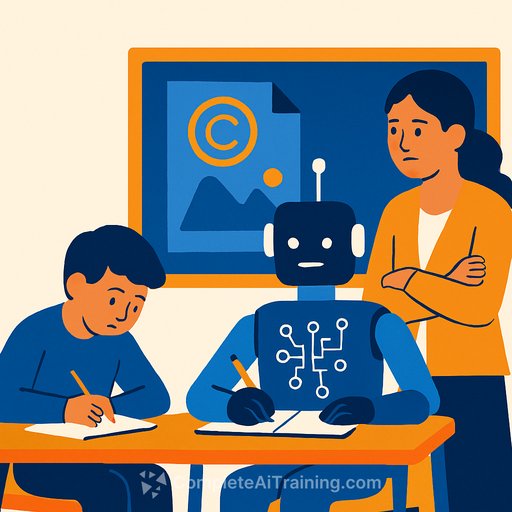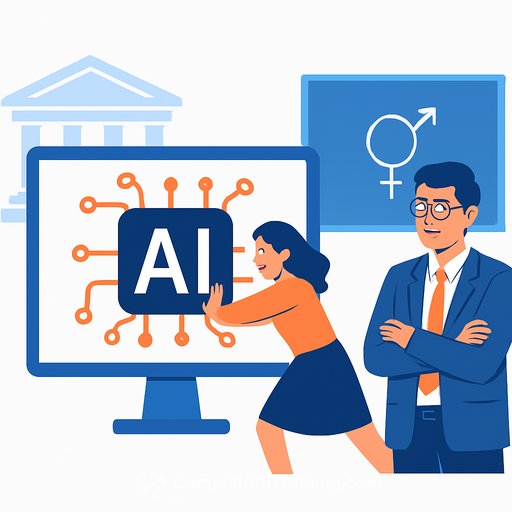A.I. in School: What It Can and Can't Do
Concern about A.I. in classrooms is justified. Overreliance can dull original thought, flatten creativity, and tempt students to outsource their thinking. But A.I. is here. Our job is to protect the learning process while using the tool where it adds real value.
What A.I. Can Do for Educators
- Create differentiated practice and scaffolds for mixed-ability classes.
- Draft rubrics, exemplar responses, and fast formative feedback you can refine.
- Streamline admin tasks: emails, newsletters, lesson outlines, and accommodation summaries.
- Surface patterns in student misconceptions to inform mini-lessons.
What A.I. Can't Replace
- Original synthesis grounded in sources, lived experience, and classroom discourse.
- Ethical judgment, context, and the nuance of human feedback.
- Motivation, curiosity, and the relationships that drive effort.
- Reliable cheating detection. Classifiers flag false positives and are easy to evade.
Practical Guardrails You Can Implement This Term
- Publish a clear policy. Define permitted, restricted, and prohibited uses. Require an A.I. use cover sheet: tools used, why they were used, prompts, key outputs, and how the work was verified.
- Assess the process, not just the product. Use in-class writing, oral defenses, whiteboard walkthroughs, and milestone check-ins. Collect outlines, drafts, and notes to make thinking visible.
- Require version history. Have students write in tools with revision logs (e.g., Docs, Overleaf, Git). Ask for annotated drafts highlighting what changed and why.
- Source-first instruction. Teach research, note-making, and citation before any A.I. use. If A.I. is used to brainstorm, require source verification and quotes with page or timestamp.
- Make honest use easier than cheating. Provide quick topic approvals, prompt templates, and checklists. Shorten the path to doing the work the right way.
- Use A.I. to front-load feedback. Generate draft rubrics, criteria checklists, and sentence starters. You provide the judgment; let the tool handle the first pass.
- Teach effective prompting and verification. Plan → Prompt → Check → Cite. Students should log prompts and show how they verified facts.
- Mind equity. Offer low-tech options, offline materials, and clear alternatives so access doesn't determine achievement.
- Anchor to guidance. See current recommendations from the U.S. Department of Education's Office of Educational Technology here and UNESCO's guidance on generative A.I. in education here.
Academic Integrity Without Fear
Bans push misuse underground. Clear norms and process-based grading bring it into the open. If students must defend claims, show drafts, and cite sources, shortcutting becomes risky and time-consuming.
Quick Classroom Policy Template
- Allowed: Brainstorming, outlining, draft feedback, rubric interpretation, language support. Disclosure required.
- Restricted: Summarizing sources without citations, coding help without comments, translations presented as original. Disclosure and verification required.
- Prohibited: Submitting A.I.-generated text or media as original work, using A.I. during closed assessments, fabricating citations or data.
- Disclosure: Attach an A.I. cover sheet with prompts, excerpts of outputs, and notes on edits and source checks.
- Consequences: Follow school policy; require resubmission with documented process for first offenses where appropriate.
Lesson and Assessment Ideas
- Compare-and-improve: Students critique an A.I.-generated response, then produce a superior version with cited sources.
- Process portfolios: Mind maps, annotated outlines, drafts, and reflections graded alongside the final product.
- Think-alouds: Short oral defenses or screen-recorded walkthroughs explaining choices and evidence.
- Local data projects: Use class-collected data so A.I. can assist analysis but can't replace original work.
Professional Development
Staff need practical reps, not hype. Build PD around policy writing, assessment redesign, prompt logs, and verification routines. For structured learning paths by role, see Complete AI Training: Courses by Job.
A.I. doesn't ruin learning. Poor assignment design and unclear expectations do. Protect thinking, make process visible, and let the tool support - not replace - the work students must do to learn.
Your membership also unlocks:






